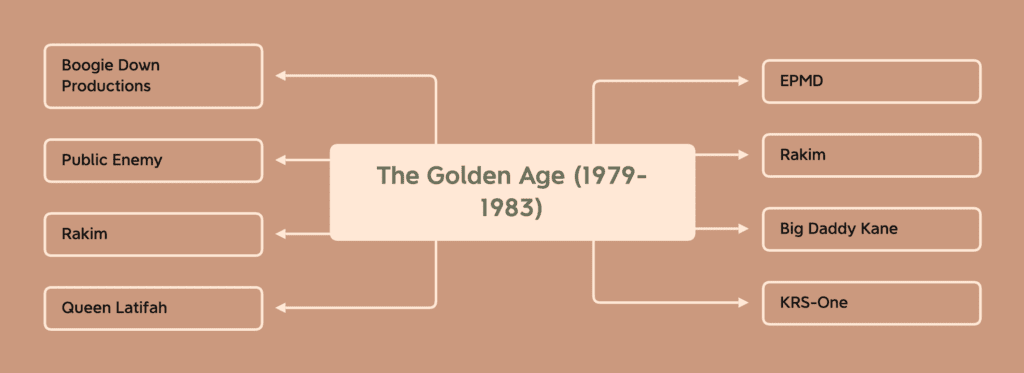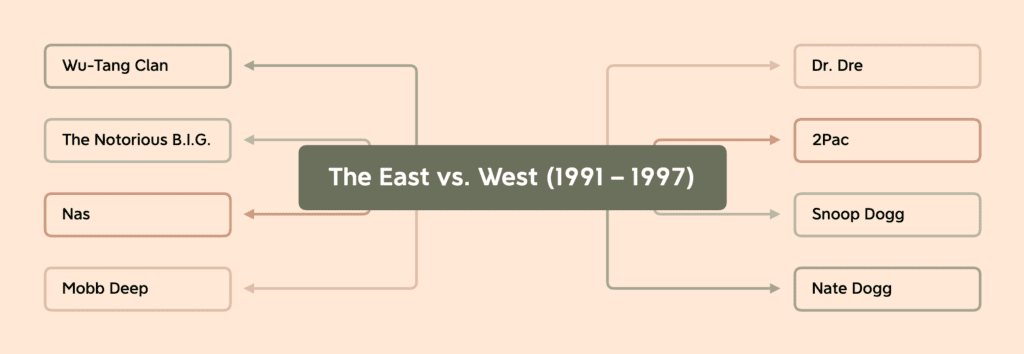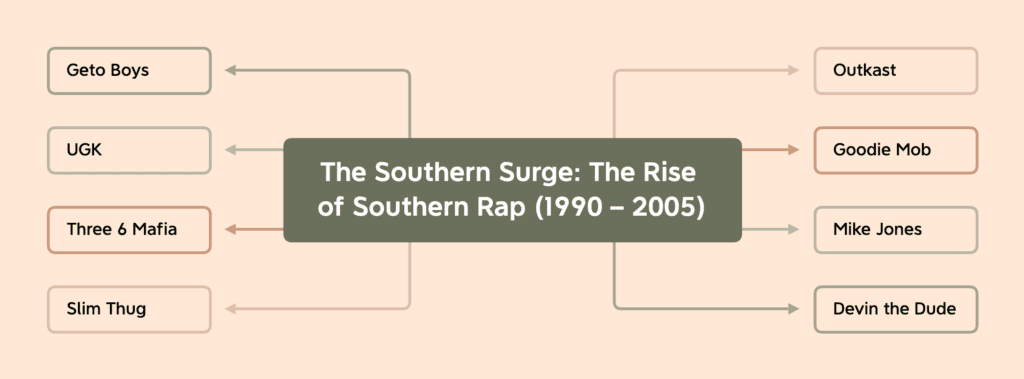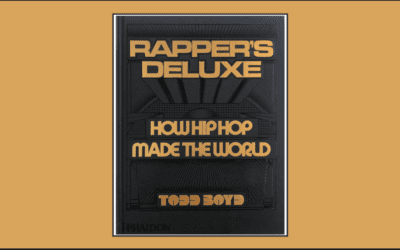From Old School to The Bling Era: A Comprehensive Guide to Hip-Hop History
Hip-hop, a genre deeply entwined with the cultural, social, and political tapestry of our times, embarks on a momentous journey as it commemorates its 50th anniversary in the year 2023. This grand odyssey of sound serves as an exploration of the multifaceted chapters that comprise the rich tapestry of hip-hop history.

From its humble beginnings in the Bronx to its meteoric rise as a global force, hip-hop has etched its indelible mark on the musical and cultural landscapes, forever reshaping the artistic panorama. Join us on this melodic marathon through the annals of hip-hop history, where we uncover the pulsating beats, lyrical prowess, and socio-political resonance that define this captivating genre. Welcome to the immersive world of hip-hop history, where rhythm, rhyme, and revolution collide.
The Dawn of Hip-Hop History: The Old School (1979 – 1983)

In the sweltering summer of 1973, amidst the vibrant cacophony of a block party in New York City’s Bronx, hip-hop drew its inaugural breath. The architect of this sonic revolution was DJ Kool Herc, a visionary who dared to extend the beat of a recording using two turntables and a mixer. As the music continued to pulse through the air, he began emceeing, his voice weaving through the rhythm, marking the genesis of a cultural phenomenon.
The Old School was a landscape of discovery, where audacious exploration and innovation reigned supreme. The foundational pillars of hip-hop – scratching and rapping – found their genesis in these years. Scratching, the creative manipulation of a vinyl record beneath a needle to construct a rhythmic pattern, breathed an exotic texture into the genre’s sound. Rapping, the rhythmic spoken delivery of rhymes and witty wordplay, became the vocal lifeline of hip-hop, narrating tales, and offering commentary.
This dawning era was richly infused with vibrant traces of funk and disco, a vivid reflection of the dance culture from which it was born. The rapping techniques were raw, yet potent, often underpinned by themes of celebration, community, and the elation of a good party. The lyrics, seemingly playful and dedicated to the spirit of the party, were nonetheless the echo of a deeper narrative.
Beneath the apparent simplicity, the lyrics encapsulated the voice of a community, the reverberation of their lived experiences, and the articulation of their hopes and dreams. These were the rhythms of the streets, the throbbing pulse of the Bronx, and the resounding heartbeat of a burgeoning culture.
Key artists of this time, such as Grandmaster Flash and the Furious Five, harnessed the raw energy of the streets in their music. Their groundbreaking track “The Message” (1982) was a hard-hitting social commentary, setting a new precedent for what hip-hop could be.
The Sugarhill Gang brought hip-hop to mainstream attention with their timeless hit “Rapper’s Delight” (1979), showcasing the genre’s potential for fun, danceable tracks that still delivered sharp, clever rhymes.
Afrika Bambaataa, often considered a godfather of hip-hop, played a pivotal role in shaping the genre’s early sounds. His track “Planet Rock” (1982) seamlessly blended electro sounds with influences from different genres, highlighting hip-hop’s versatility and potential for innovation.
The Old School era is a testament to more than just the genesis of a genre. It was the unfolding of a cultural revolution, the blossoming of a unique form of expression, and the first few strides of a voyage that would forever reconfigure the panorama of music. The Old School, with its raw dynamism and pioneering spirit, laid the foundation for the labyrinth of hip-hop sub-genres we celebrate today.
Key Songs from The Old School Era
- “Rapper’s Delight” by The Sugarhill Gang (1979): Often credited as the first hip-hop song to gain widespread popularity, “Rapper’s Delight” is a quintessential representation of the Old School era. Its infectious rhythm, party-centric lyrics, and innovative use of sampling laid the groundwork for the genre.
- “The Message” by Grandmaster Flash and the Furious Five (1982): This track is renowned for its profound social commentary, a departure from the light, party-themed lyrics that characterized much of early hip-hop. “The Message” is a testament to hip-hop’s evolving complexity and depth during the Old School era.
- “Planet Rock” by Afrika Bambaataa (1982): A revolutionary fusion of electronic music with early hip-hop, the song is often lauded as a foundational piece of the electro-funk genre. Utilizing the innovative TR-808 drum machine, it delivers a distinctive synthetic beat that pulses beneath the melodic samples from Kraftwerk’s “Trans-Europe Express” and “Numbers.” “Planet Rock” was a defining moment in hip-hop, displaying the genre’s potential for sonic exploration and its ability to draw from a diverse range of influences to create something truly unique and timeless.
The Renaissance: The Golden Age (1983 – 1997)

As the early 1980s twilight merged into the midday sun of the ’90s, hip-hop entered what is now remembered as its Golden Era. This period, often referred to as the ‘Golden Age,’ represented a paradigm shift in hip-hop culture, a dynamic transition from its Old School foundations towards a more multifaceted and sophisticated musical landscape.
The Golden Era signaled a shift towards succinct, refined compositions, breaking away from the lengthy jam sessions that defined the initial years of hip-hop. In step with this evolution, a new production style surfaced, characterized by minimalist beats crafted from drum machines. This transition paved the way for an enhanced emphasis on lyrics, ushering in an era of complex storytelling and profound socio-political commentary.
This period saw hip-hop evolve into a platform for social discourse, a canvas for artists to address socio-political issues, challenge norms, and provide an unfiltered portrayal of urban life. Iconic figures such as KRS-One, Big Daddy Kane, EPMD, Rakim, Queen Latifah, and Public Enemy began using their music as a tool to address topics ranging from socio-economic struggles to racial inequality.
KRS-One, with his profound lyricism and socially conscious narratives, transformed his music into a medium of education and empowerment. Big Daddy Kane brought a new level of lyricism and flow, coupled with a smooth persona, challenging the status quo and broadening the scope of what was possible within hip-hop. Rakim, with his poetic prowess, introduced a heightened degree of complexity and depth to rap, while EPMD’s funk-infused tracks and narrative lyrics contributed significantly to the era’s sound.
Queen Latifah, one of the few prominent female rappers of the era, used her platform to address issues of gender and race, shattering stereotypes and advocating for equality. Public Enemy, with their potent, politically charged lyrics, incited listeners to question societal structures and think critically about their circumstances.
The Golden Era also marked a time of unbridled creativity and innovation in hip-hop. Artists pushed beyond established boundaries, experimenting with diverse sounds and styles, enriching the genre with a multitude of influences, and giving birth to a constantly evolving, uniquely unpredictable musical world.
As we reflect on this time, we recognize the indelible impact of the Golden Era on the hip-hop we know today. The profound lyricism, the varied soundscapes, and the bold socio-political commentary continue to echo in the hip-hop of the present, bearing testament to the Golden Era’s enduring legacy.
Key Songs from The Golden Age
- “Fight The Power” by Public Enemy (1989): This anthem of resistance, featured in Spike Lee’s film Do The Right Thing, is a potent representation of the socio-political commentary that characterized the Golden Age. With its hard-hitting lyrics and aggressive sound, “Fight The Power” embodies Public Enemy’s confrontational style and their commitment to challenging the status quo, making this one of the most important songs in hip-hop history.
- “The Bridge is Over” by Boogie Down Productions (1987): This track, led by KRS-One, is a classic example of the battle rap tradition and the East Coast vs. West Coast rivalry that was a significant part of the Golden Age narrative. The song’s insightful commentary and thought-provoking narratives reflect the era’s emphasis on lyrical content and socio-political themes.
- “My Philosophy” – KRS-One (1988): Crafted with the intellectual prowess that characterizes KRS-One’s body of work, “My Philosophy” stands as a seminal track of the Golden Era. Released in 1988, the song masterfully combines punchy beats with profound lyrical wisdom, encapsulating KRS-One’s desire to use hip-hop as an educational tool. With themes touching on the state of the Black community, media manipulation, and the need for unity and resilience, “My Philosophy” remains an exemplary testament to the power of conscious rap.
- “Ain’t No Half Steppin'” – Big Daddy Kane (1988): An unmistakable classic from the Golden Era, Big Daddy Kane’s “Ain’t No Half Steppin'” arrived in 1988, making an indelible mark on the hip-hop landscape. Big Daddy Kane’s intricate rhymes and silky-smooth delivery over a hypnotic, laid-back groove, brought a distinct sophistication to the game, setting him apart in an era of grand lyricists. The song is infused with Kane’s swaggering confidence, his wordplay slick, stylish, and brimming with self-assured audacity.
Hip-Hop Awakening: Conscious Wave (1988 – 1999)

Emerging from the Golden Era’s vibrant radiance came another stirring transformation in hip-hop, a period from 1988 to 1999, eloquently known as ‘The Conscious Resonance.’ This era could be traced back to trailblazers like KRS-ONE, but its true momentum solidified in the 90s, becoming a perceptible wave that this section will primarily delve into.
Contrary to the ubiquitous commercial pulse of hip-hop, an avant-garde cadre of artists took the stage, igniting the Conscious Resonance. These weren’t mere contrarians, but lyrical poets harnessing the transformative essence of the genre to evolve, introspect, reflect, and critique. Their prose unraveled the multifaceted tapestry of life, fearlessly addressing topics of race, politics, poverty, and the environment.
Hip-hop became their instrument, a lighthouse cutting through the fog, guiding the genre toward an enriched maturity. Conscious rap marked an era of thoughtful discourse, substantiating its relevance and potency within the dynamic orbit of hip-hop.
This era reverberates with the echoes of pioneers like De La Soul, who infused hip-hop with vibrant, psychedelic energy. Their introspective lyricism and groove-driven beats introduced a refreshing narrative, challenging the status quo with poignant tales of peace, love, and positivity. Learn more about De La’s classic album Buhloone Midstate.
A Tribe Called Quest also commands our respect, as they crafted an effortless blend of consciousness and cool. Their music explored cultural identities, socio-political dynamics, and personal experiences, all underpinned by their signature jazz-influenced beats that never ceased to sway.
We’d be remiss not to pay homage to The Roots, the remarkable collective from Philadelphia. Known for their fusion of live instrumentation with classic hip-hop beats, they delivered powerful narratives on societal issues, identity, and the complexities of the human experience.
To truly absorb the spirit of this era, these are the three paramount tracks you should immerse yourself in:
Key Songs from Conscious Rap
“Me Myself and I” by De La Soul (1989): This track, built on a funky bassline and psychedelic sounds, deals with themes of individuality and the refusal to conform to traditional hip-hop cliches. Explore the revolutionary group further in a list of the best De La Soul songs.
“Can I Kick It?” by A Tribe Called Quest (1990): Over a laid-back beat and a groovy bassline, this song exudes positive vibes while inviting listeners to engage with the music and the message it carries.
“You Got Me” by The Roots feat. Erykah Badu (1999): A passionate commentary on relationships, this song showcases The Roots’ unparalleled ability to fuse hip-hop with soul and R&B, delivering a powerful, relatable message.
The Clash of Coasts: The East vs. West (1991 – 1997)

This epoch in the vibrant narrative of hip-hop history bore witness to a seismic divide between the Atlantic and Pacific. An intense geographical rivalry ignited, forging an intriguing dichotomy between the East and West Coast hip-hop styles. The resonating echoes of this divide would reverberate through the genre for years to come, setting the stage for a face-off that, at its zenith, would reshape the soundscape of hip-hop.
East Coast, with New York at its heart, built upon the genre’s origins. This was a realm where lyricism reigned supreme and complex, multisyllabic rhymes were the order of the day. A gritty, street-smart, boom-bap sound painted a vivid image of life in the metropolis. Notable proponents of this style included the likes of Wu-Tang Clan, whose gritty, raw lyricism and innovative beats created an unforgettable impression, and Nas, whose vivid storytelling in Illmatic has been hailed as an absolute classic.
Further down the East Coast, The Notorious B.I.G., Brooklyn’s prodigious son, dominated the scene with his unparalleled lyrical prowess. His narratives were a blend of the grim realities of street life and aspirational tales of success, culminating in tracks like “Juicy,” which resonated deeply within and beyond the community.
On the other side of the country, California emerged as the nerve center of the West Coast style. Here, the soundscape was significantly different, defined by its laid-back, funky melodies, psychedelic G-funk influences, and a certain sun-drenched quality that was as infectious as it was unique. The legendary Dr. Dre was instrumental in crafting this G-Funk style, introducing audiences to a smoother, groovier sonic experience with “Nuthin’ but a ‘G’ Thang.”
Tupac Shakur, another iconic figure of the West Coast scene, used his potent lyricism to tackle socio-political issues, making an indelible mark on the genre. His charisma, profound lyrics, and the raw emotional honesty of tracks like “Changes” helped to define the West Coast style and left an enduring legacy.
However, this rivalry transcended the music, becoming a contentious issue that would cast a dark shadow over the genre. The unfortunate shooting deaths of Tupac Shakur and The Notorious B.I.G, two of the era’s most influential figures, marked a tragic climax to this bitter rivalry.
Key Songs from The East vs. West Era (1991 – 1997)
- “C.R.E.A.M” – Wu-Tang Clan (1993): Wu-Tang Clan’s “C.R.E.A.M” (Cash Rules Everything Around Me) is an emblematic anthem of the gritty realities of urban life. The haunting piano loop and hard-hitting beats frame the collective’s brutally honest portrayal of a life ruled by money. Each verse tells a different story, weaving a tapestry of narratives that reflect the struggles, dreams, and aspirations of the streets. This track has left an indelible imprint on hip-hop, further solidifying Wu-Tang’s legacy as pioneers of the East Coast sound.
- “N.Y. State of Mind” – Nas (1994): An essential track from Nas’s critically acclaimed debut album “Illmatic”, “N.Y. State of Mind” masterfully captures the essence of life in the underbelly of New York City. Nas’s lyricism is at its peak, painting a vivid, intricate picture of his surroundings and experiences growing up in the Queensbridge projects. The atmospheric production, the raw energy, and Nas’s intricate storytelling blend seamlessly to create an unforgettable sonic portrait of the city.
- “Juicy” – The Notorious B.I.G (1994): As one of Biggie Smalls’ most iconic tracks, “Juicy” encapsulates his rise from the streets of Brooklyn to the echelons of hip-hop royalty. The lyricism is a triumph of storytelling, detailing his journey from hardship to success with remarkable authenticity. The backing track, a sample of Mtume’s “Juicy Fruit,” lends an irresistible groove, contrasting beautifully with Biggie’s hard-hitting tales of struggle and success.
- “Nuthin’ but a ‘G’ Thang” – Dr. Dre (1992): This single from Dr. Dre’s debut solo album “The Chronic” is a quintessential G-funk track that helped shape the sound of West Coast hip-hop. The laid-back rhythm, the melodic synthesizer, and the relaxed, seamless verses from Dr. Dre and Snoop Dogg create an infectious groove that has defined the West Coast sound. It’s a celebration of California life, with a smooth blend of party vibes and social commentary that has made it an enduring classic.
- “Changes” – Tupac Shakur (1998): Perhaps one of Tupac’s most famous tracks, “Changes” stands as a poignant social commentary on life in America. Against a stirring piano sample from Bruce Hornsby’s “The Way It Is,” Tupac addresses societal issues ranging from racism and police brutality to poverty and drug abuse. It’s a powerful message of struggle and hope, a timeless testament to Tupac’s lyrical prowess and his deep-seated desire for change.
The Southern Surge: The Rise of Southern Rap (1990 – 2005)

The landscape of hip-hop underwent a seismic shift between 1990 and 2005, as the baton of creativity migrated towards the South. Southern hip-hop, with its roots deeply embedded in four vibrant hubs – Houston, Atlanta, New Orleans, and Memphis – started to unfurl its unique aesthetic, taking center stage and forever altering the rhythmic cadences of the genre.
The Southern rap sound, distinctive in its delivery and sonic texture, was a cocktail of funk-infused beats, soulful melodies, and bass-heavy production. It was an evolution from the traditional hip-hop sound, offering a slower, more atmospheric ambiance that encapsulated the laid-back charm of the South. This era bore witness to the rise of the ‘Dirty South’ sound – an embodiment of Southern life and culture, with an emphasis on storytelling delivered with a distinctive Southern drawl.
Pioneers of this era, the Geto Boys, hailing from Houston, wielded their impactful lyrics like a mirror to society, reflecting the harsh realities of street life with raw authenticity. They leaned into horrorcore, using graphic narratives to shed light on urban violence, mental health, and the human condition.
Next, from the swampy depths of Port Arthur, Texas, rose UGK (Underground Kingz), a dynamic duo composed of Pimp C and Bun B. Their music was a potent brew of funk-inspired beats and gritty narratives about the Southern street hustle. They masterfully blended the earthy charm of country rap with the decadence of ‘pimp’ culture, adding another flavorful dimension to the genre.
OutKast, the pride of Atlanta, was perhaps the most eclectic of this triumvirate. André 3000 and Big Boi blended their lyrical genius with innovative, genre-bending production to create a sound that was both ahead of its time and deeply rooted in Southern tradition. Their music, a fusion of funk, jazz, and soul, interwoven with insightful commentary on social and political issues, became the blueprint for the Southern rap aesthetic.
The Southern sweep wouldn’t have been complete without the dark, hypnotic stylings of Memphis’ own Three 6 Mafia. With their crunk-tinged, gritty sound, they brought the underground crunk scene to hip-hop, adding a pulsating layer of intensity to the genre. The Three 6 Mafia’s best songs like “Sippin on Some Syrup” encapsulated the group’s raw and raucous approach, cementing their place in the annals of Southern hip-hop. Explore Memphis Rap Roots further in our articles about DJ Spanish Fly and Memphis Rap in general.
Or, check out our collection dedicated to Memphis Rap History.
To immerse oneself in the soul of the Southern Soar, here are five pivotal tracks that encapsulate the heart and spirit of this era:
Key Songs from the Southern Rap Surge
- “Mind Playing Tricks on Me” – Geto Boys (1991): An emblematic masterpiece of the horrorcore subgenre, this track weaves a chilling narrative of paranoia and psychological trauma, set against the backdrop of urban struggle. It remains a haunting testament to the Geto Boys’ raw and unfiltered storytelling.
- “Ridin’ Dirty” – UGK (1996): The title track from their critically acclaimed album, “Ridin’ Dirty” encapsulates the quintessential UGK sound, a heady blend of Pimp C’s funk-infused beats and Bun B’s gritty, streetwise lyricism. The track delves into the trials and tribulations of the Southern street hustle, offering a raw and unvarnished glimpse into the darker side of the American Dream.
- “Ms. Jackson” – OutKast (2000): A prime example of OutKast’s innovative spirit, “Ms. Jackson” is a heartfelt, melodically complex track that tackles the nuances of fractured relationships and familial discord. Andre 3000’s poignant apology to the mother of his child’s mother showcases the duo’s capacity for introspection and emotional depth.
- “Still Tippin'” – Mike Jones featuring Slim Thug & Paul Wall (2004): This Houston classic was instrumental in pushing the chopped and screwed technique, pioneered by the late DJ Screw, into the mainstream. The track’s slower tempo, low bass, and relaxed vibes encapsulate the ‘Dirty South’ sound while showcasing the unique Houston rap culture.
- “Break Da Law ’95” – Three 6 Mafia (1995): Three 6 Mafia brought a darker sound to Southern hip-hop. Much like the Geto Boys, horror infused their songs, but they took the darkness even further. With cryptic beats and powerful chants, Mystic Stylez is a true game-changer.
The Era of Extravagance: The Bling Era (1997 – 2006)
In a grand display of opulence, the hip-hop landscape shifted towards an Era of Extravagance, also known as the ‘Bling Era,’ from 1997 to 2006. The Bling Era signified an ostentatious return to the genre’s Old School roots but with a twist of luxury and materialism. This was a time when hip-hop went from being a pulsating undercurrent in the music industry to holding the reins of mainstream culture.
The era was characterized by its flamboyant lyrical content, where storytelling was often embellished with tales of extravagant lifestyles, overflowing wealth, and high fashion. The beats, once a complement to the lyrical prowess of an artist, came to the forefront, often becoming the driving force of a song. Rhymes that were once focused on socio-political commentary and the lived reality of urban life were now laced with grandiose displays of material success and the pursuit of opulence.
This was the time when artists like Puff Daddy, now known as Diddy, and the Bad Boy Records roster ascended to fame, dazzling audiences with their polished production values, flashy music videos, and unapologetic displays of wealth. Jay-Z also rose to prominence during this era, his intricate storytelling painting vivid portraits of his journey from the Marcy Projects to becoming a hip-hop mogul. Out on the West Coast, Dr. Dre and his proteges at Aftermath Entertainment, including Eminem and 50 Cent, defined the era with their edgy lyrics and glossy, polished beats.
The South, not to be outdone, made significant contributions to this era as well. Cash Money Records, led by Birdman and housing talents like Lil Wayne and Juvenile, mirrored their East Coast counterparts’ opulence and excess, all while infusing their unique Southern flair. The crunk movement, led by artists like Lil Jon and the East Side Boyz, introduced a raw, high-energy sound that dominated the Southern and eventually national charts.
The Bling Era was indeed a time of great commercial success for rap and its artists. Record sales soared, hip-hop artists topped the charts, and the genre’s influence permeated all aspects of popular culture. Despite critiques suggesting the era veered away from hip-hop’s conscious roots, there is no denying that the Bling Era significantly expanded the genre’s reach, making hip-hop a global phenomenon.
- “Bling Bling” – B.G. feat. Big Tymers & Hot Boys (1999): This track is more than just a hip-hop song—it is the cultural artifact that gave the Bling Era its name. With its celebration of luxury, wealth, and conspicuous consumption, B.G. and the Hot Boys perfectly captured the spirit of the times, while coining a term that would become a ubiquitous part of the pop culture lexicon. The shimmering production, coupled with verses about diamonds, cars, and wealth, made “Bling Bling” a definitive anthem of this extravagant era.
- “Mo Money Mo Problems” – The Notorious B.I.G feat. Puff Daddy & Mase (1997): This iconic hit stands as a quintessential anthem of the Bling Era. Over a sample of Diana Ross’s “I’m Coming Out,” Biggie, Puff Daddy, and Mase celebrate their prosperity while also musing on the complications that wealth can bring.
- “In Da Club” – 50 Cent (2003): This Dr. Dre-produced hit marked 50 Cent’s arrival on the mainstream scene. The track’s pulsating beat and catchy hook, combined with lyrics celebrating hedonistic party culture, make it a defining track of the Bling Era.
- “Back That Azz Up” – Juvenile feat. Mannie Fresh & Lil Wayne (1998): This Cash Money Records hit brought the distinctive bounce of New Orleans to the forefront of hip-hop. Its infectious beat and explicit lyrics encapsulate the unapologetic excess of the Bling Era.
- “Yeah!” – Usher feat. Lil Jon & Ludacris (2004): This crossover smash melded R&B and the crunk sound of the South. Produced by Lil Jon, the track’s high-energy beat and catchy chorus became a staple of the Bling Era and an enduring party anthem.
End Musings on Hip-Hop History
As we reflect on hip-hop’s 50-year journey, we celebrate the countless artists, producers, DJs, and visionaries who have contributed to its rich tapestry. Their creativity, passion, and innovation have propelled hip-hop into uncharted territories and pushed the boundaries of artistic expression.
Hip-hop history continues to unfold, as new generations of artists emerge, carrying the torch and shaping the future of the genre. As listeners, enthusiasts, and participants in this melodic marathon, let us honor and appreciate the immense cultural significance of hip-hop. May its rhythm, rhyme, and revolution continue to inspire, empower, and unite us for generations to come.


